Rotator cuff injuries are all too common. And often when we have an injury, we think the muscle must have been weak and that is why they got hurt.
But all too often that IS NOT the case. All too often smaller, weaker muscles end up injured because they become overstrained and overworked.
So while we may need to rehab them to rebuild them after the injury, it is key we also understand that overworking them again is NOT the answer!
Your rotator cuff is an important muscle group to keep strong to support your shoulder. HOWEVER, all too often these small muscles become overstressed and overstrained.
These muscles can become overworked due to our poor posture. Therefore working on thoracic extension and shoulder mobility are key.
So while we do need to strengthen them, we also need to make sure that other bigger and stronger muscles are pulling their weight to support our shoulders and prevent them from becoming overworked!
First off, what are the 4 muscles of your rotator cuff?
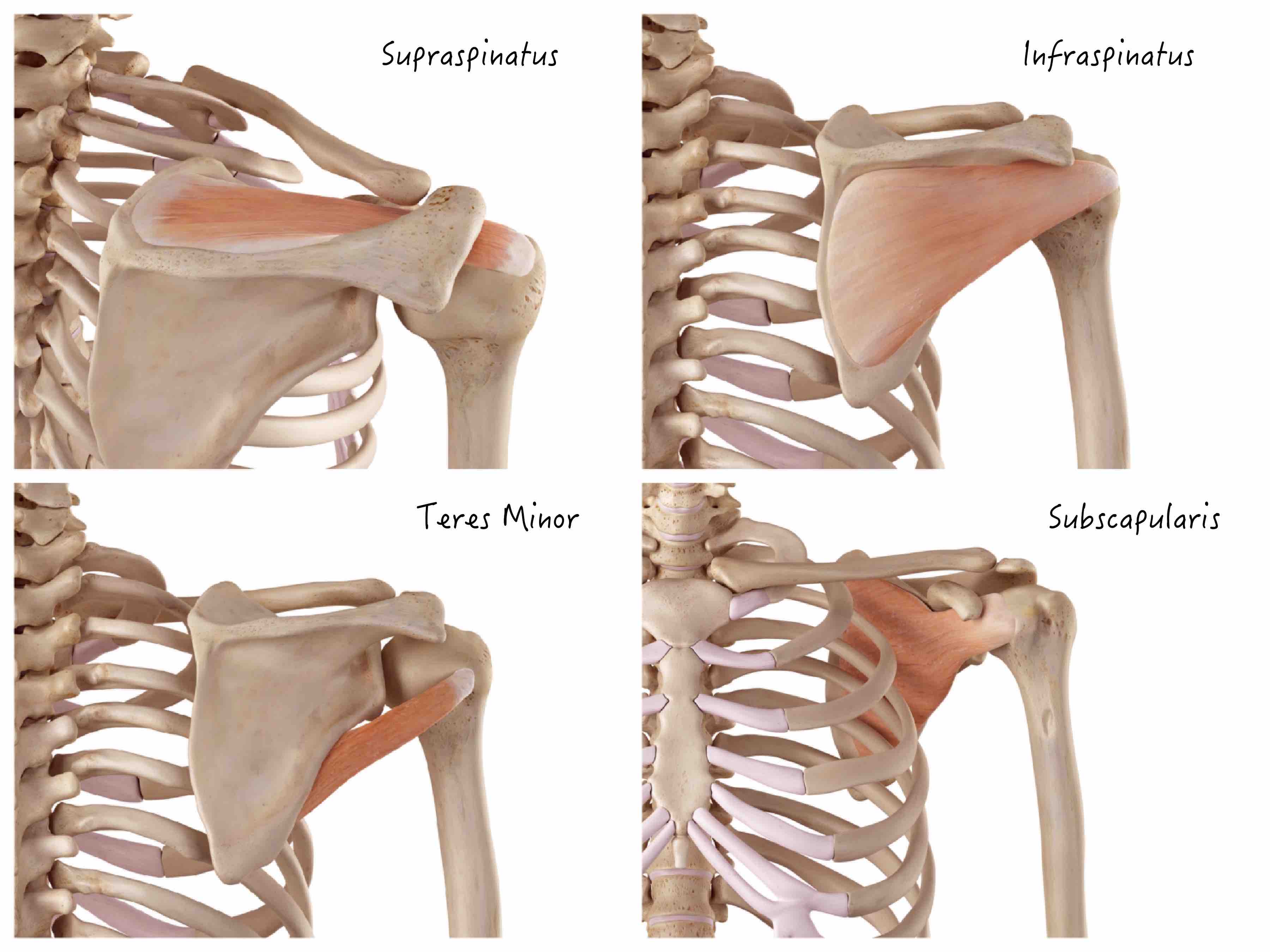
- Supraspinatus
- Infraspinatus
- Teres Minor
- Subscapularis
So what do these muscles do?
The Supraspinatus abducts the shoulder, aka helps you raise your arm out to the side.
The Infraspinatus and Teres Minor externally rotate the shoulder. If your elbow was in by your side and bent to 90 degrees and your hand was out in front, it would help rotate your hand out to the side.
The Subscapularis internally rotates your shoulder. So if your elbow was bent in the same position as I described above, your hand would move in toward your body.
It is important to note that while these muscles all help stabilize your shoulder they all can contribute to different joint actions. That is why if you have had “rotator cuff injuries” it is important you know which one!
But these muscles are key for stability since your shoulder is a ball and socket joint. Think of it as if you had a golf ball on a tee and wanted to hold that golf ball in place so it could rotate but not fall off!
These muscles are also made up of mainly type I muscle fibers. So when you do want to work them for stability purposes, higher reps and lower loads will be key.
But remember, while keeping these muscles strong for stability is key, if your stronger, larger muscles aren’t working, or say that golf ball isn’t properly aligned on that tee, these muscles can easily become overworked which can lead to injuries such as tears!
So while you want to make sure activation moves are included for these muscles, preventing them from being overworked with foam rolling and stretching is key while also focusing on activation of larger muscles!
3 Key Moves To Prevent Rotator Cuff Overuse Injuries
To help prevent overuse of your rotator cuff muscles, you will want to make sure you have proper thoracic extension as well as shoulder and scapular mobility and stability.
In my Arm Burner program, I provide you with Burner Workouts that include foam rolling, stretching and activation series to help you address common areas of immobility and weakness due to our modern lifestyle aka the fact that we spend so much time sitting hunched over!
These help keep your body healthy and mobile BEFORE you end up with compensations, imbalances and injuries! They are also great prehab to keep previous injuries at bay!
Below are 3 moves that are important to include in your upper body training routines if you have a desk job especially!
1. Shoulder U Foam Rolling:
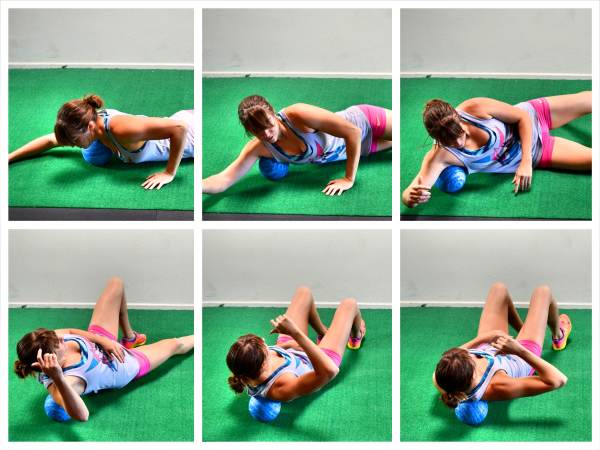
To do the Shoulder “U,” a bigger foam ball works best. Lie face down on the ground with the ball under your chest, under your collarbone and right beside your shoulder. Begin to roll out your chest. Hold on any tight spots in your chest as you move your arm from overhead down toward your feet.
Then roll the ball right along the muscles around your shoulder joint and then under your armpit. You can hold on any tight spots and relax and breathe. Continue moving the ball under your armpit to the side of your back, especially the muscles where your arm and back connect at the back and top of your armpit. Hold on any tight spots as you move the ball around your back.
You can roll it down the side of your back a bit and then up your back around your shoulder blade. Work up and down the shoulder blade then roll it back around front. And repeat a couple of times.
2. Active Foam Roller Star Stretch:
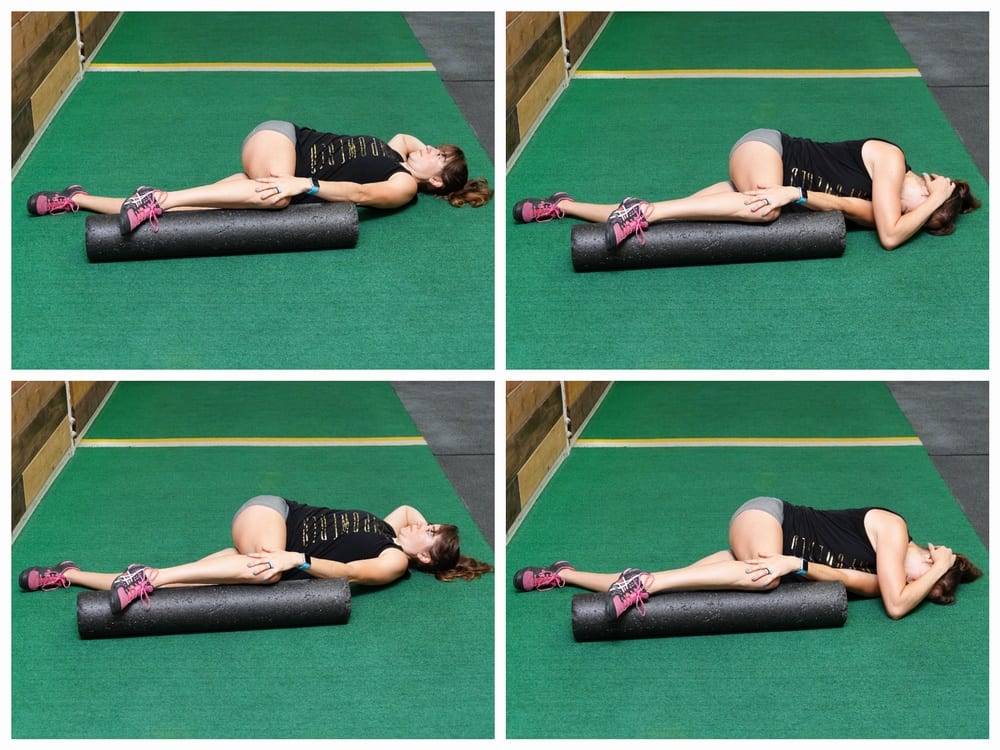
To do the Active Foam Roller Star Stretch, grab a foam roller or block that you can place on the ground under your knee. Start by lying on your back with the roller running parallel to your body and about the middle at waist height. Bend your knee, on the side furthest from the roller, and bring it up toward your chest so that your hip is bent to about 90 degrees.
Take the hand on the same side as the roller and reach across to the outside of that knee and pull your knee across your body to place it on the roller. Hold your knee down on the roller and even relax your lower leg down on it. You will want to keep your knee on the roller even if you do roll forward or backward a bit on it. Just don’t let the knee come up off of it.
Place your other hand behind your head so your elbow is open and out. Rotate to bring that elbow down on the ground by your opposite shoulder. Don’t just flap your arm but actually rotate your body.
Then lift the elbow up and rotate your chest back open toward the ceiling as you try to touch your shoulder and that elbow back down on the ground. You are trying to rotate as open as you can, twisting through your spine without letting your knee come up off the roller. Open up, pause and then rotate back closed. Repeat all reps on one side before switching.
3. Single Arm Scapular Push Ups:
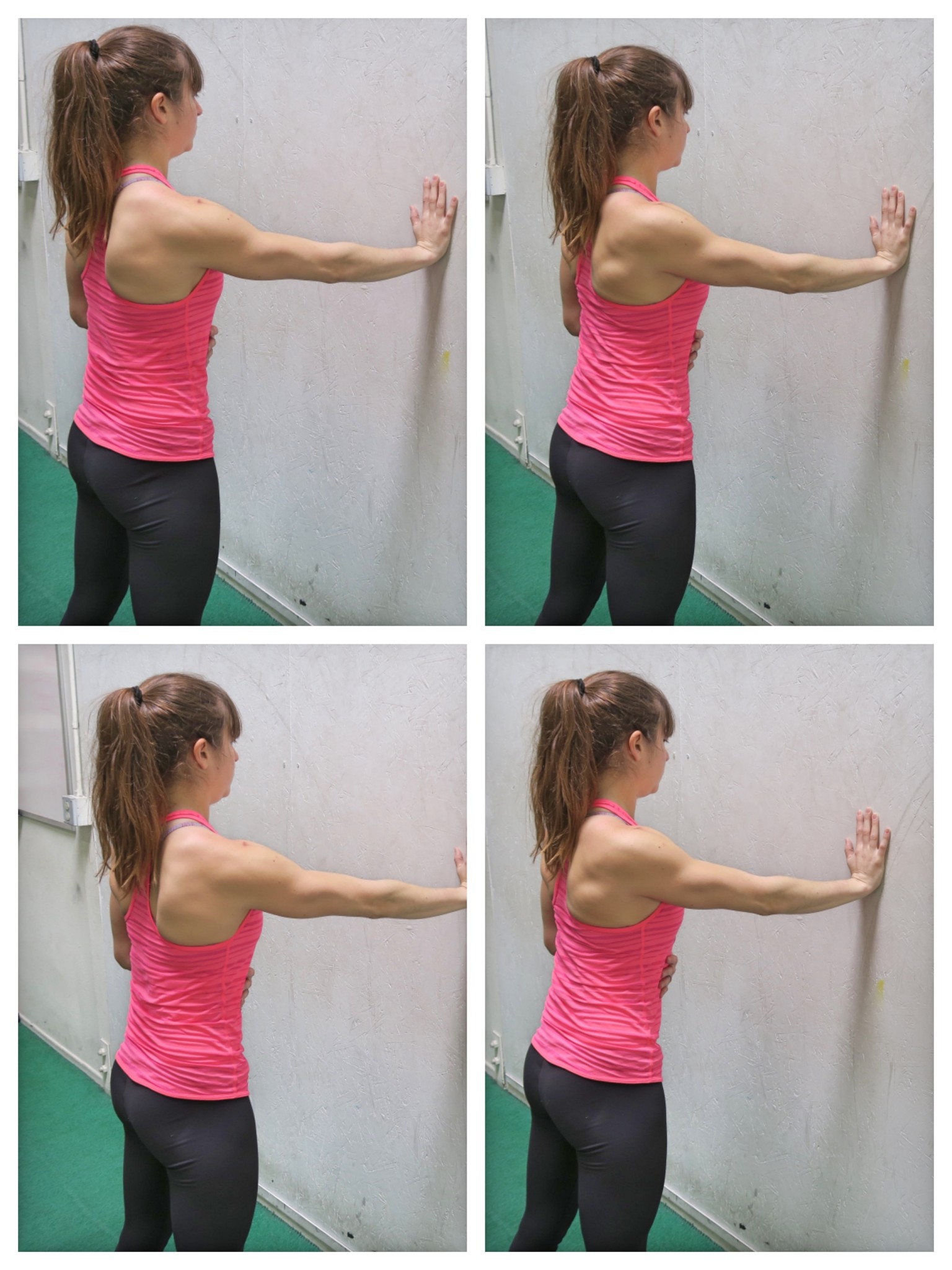
To do Single Arm Scapular Push Ups, set up facing a wall. Place one hand up on the wall at about shoulder height. Your arm should be straight, but make sure you aren’t shrugging. You can be at a slight incline to make the move harder by walking your feet back, but start standing more vertical to the wall so you can really focus on proper movement of your shoulder blade.
Then, keeping your elbow straight, press your chest toward the wall as you feel your shoulder blade retract back. You should feel your shoulder blade move toward your spine. Do not shrug your shoulder as you focus on moving the shoulder blade. Pause then relax back out.
Make sure you don’t shrug or bend your elbows or rotate to try to make the movement bigger. Keep your core tight and isolate that one side working. You will feel the muscles along the side of your back and your ribs working. You can even put the opposite hand below your armpit on the working side to feel those muscles working.

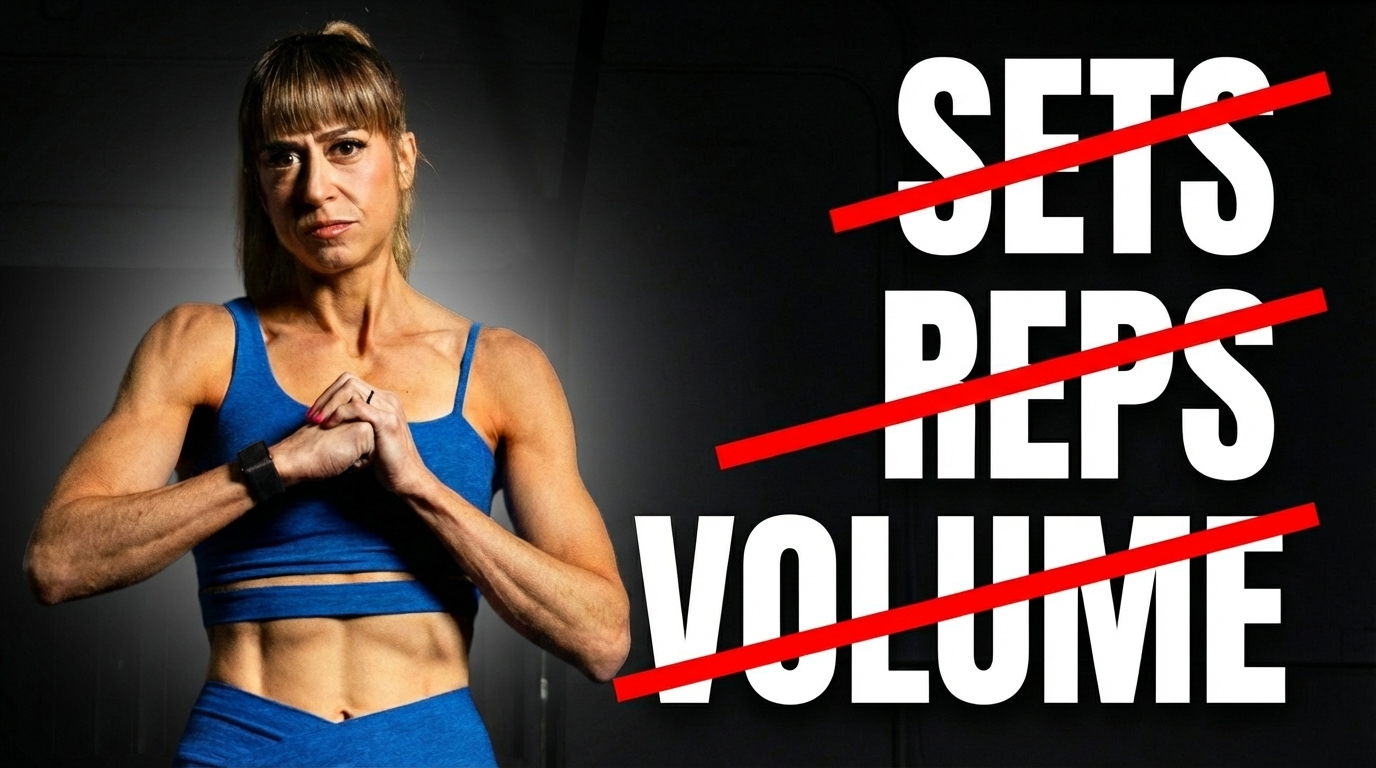
I just went foam ball shopping….any advice? Going to try this to prevent injury as I’m starting upper body workouts again on our Hoist machine.
I like the posture ball but even a lacrosse or tennis ball works!
Is this the same arm burner I purchased a few years ago?
Yes it looks like it! 🙂